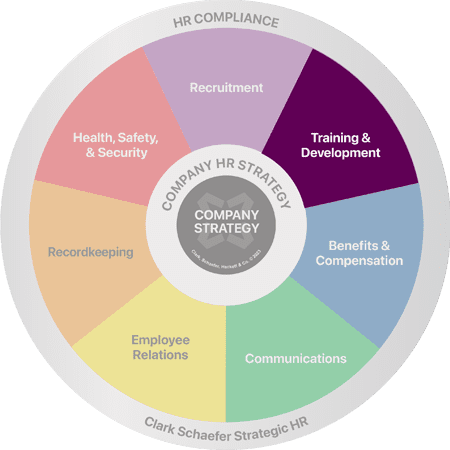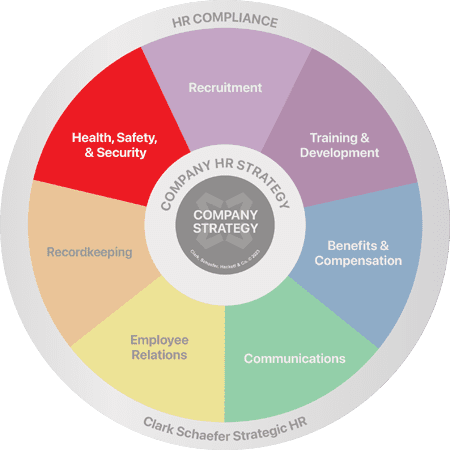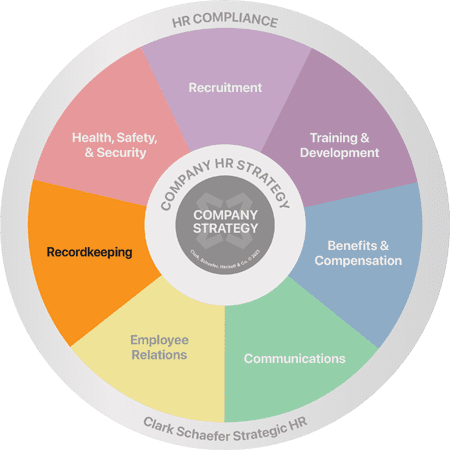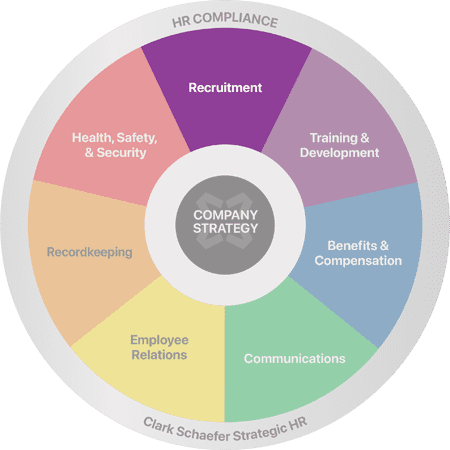Four Ways to Improve New Hire Onboarding and Training
Last Updated on October 26, 2023 / Training & Development

HR Question:
Currently, our onboarding includes completing new hire paperwork, going over our company history and policies, ensuring they have the necessary technology tools, and having them meet with select employees to learn what they need to learn to hit the ground running. What else should we incorporate to improve our new hire onboarding and training?
HR Answer:
It sounds like you’re off to a great start. Just to be sure that you’re covering the basics, you should check out these key components of an onboarding plan. To move beyond the basics, I’m going to offer four additional, yet sometimes overlooked, ingredients that can greatly improve the effectiveness of your new employee onboarding:
1. Plan the Right Duration for Onboarding
Developing a solid understanding of how an organization operates, as well as understanding the significance of an individual’s role within it (all while building long-term work relationships), takes time. In some organizations, employees are provided one to three full days of onboarding during their first week. In these situations, they typically review and complete new-hire paperwork and benefit plan enrollment forms, review the safety, health, and security components of the job, and complete any other critical training to be able to hit the ground running. However, is this sufficient onboarding to create a long-term employee? Adult learning research would suggest that it isn’t enough.
Effective adult learning practices must provide opportunities for observation, asking questions, and putting facts, ideas, and experiences together to derive new meaning. This can take time, especially when your goal is to develop a clear understanding of company values, culture, and team cohesiveness and effectiveness. So, if you’re looking for ways to improve your onboarding process, be sure you allocate an appropriate amount of time to the process.
We recommend breaking the new employee learning process into two phases: 1) Employee Orientation and 2) Employee Onboarding.
Employee orientation may take place during the first week of employment and include a company tour, introductions to key staff, new hire paperwork, and cover the basics of the new worker’s job, payroll, benefits, company policies, and safety.
Employee onboarding may start within the employee’s first week and take place over several weeks or months, depending on your goals. In the course of onboarding, you may focus on company culture, values, and team development by having the new hire meet one-on-one with team members to learn about various functions within your organization and how they will play a role in them. You may provide additional specialized training to ensure your new employee is set up for success in their position.
Keep in mind that the volume of new information can be overwhelming for new employees, so you should prioritize and plan appropriately for what information, training, and experiences they need to have from the beginning versus the weeks or months down the road.
2. Design Training for Different Learning Styles
Adults have different preferences on how they learn known as learning styles. Although you might be inclined to develop training based on how you learn best, a valuable way to improve your onboarding and new employee training is to keep your employees’ needs and learning preferences top of mind. A common model for learning styles is the VARK Learning Model which illustrates four key ways that people prefer to learn:
Visual Learners – Prefer to see information. They learn best if they are shown pictures, charts, graphs, or videos to learn important information and details.
Auditory Learners – Prefer to hear the information rather than see it. They prefer to ask questions and repeat back what they have learned.
Reading/Writing Learners – Prefer detailed, written instructions with opportunities to add notes and highlights. They learn best by writing things down to process the information.
Kinesthetic Learners – Prefer to learn by doing. They learn best when they can do “hands-on” work or try to complete a project or task even if it involves trial and error.
Many people actually prefer a combination of these learning styles to meet their learning objectives. Recognizing this can help HR and/or supervisors to tailor their training to each individual. Training Magazine recommends using a differentiated training approach designed to accommodate the different ways that employees learn – ensuring that everyone has an equal opportunity to learn. HR professionals or supervisors can discover employee learning styles by simply asking them how they prefer to learn new information. If you’re providing training for a group, be sure to incorporate a multi-faceted approach.
3. Incorporate Coaching and Mentoring
A supervisor must provide ongoing and frequent coaching to ensure that knowledge and skills are transferred effectively following training. In addition, assigning a “mentor” or “buddy” can provide a huge boost to a new hire’s onboarding and long-term experience in your organization.
Generally, the role of a mentor is to offer the new employee a connection to someone who can guide him or her but is not in a position of direct authority over the new hire. The Business Journals touts the importance of mentors recognizing how they help new employees to quickly apply their new skills while also relieving some of the new employee’s anxiety.
Mentors may be paired with a new employee for as little as a day or as long as a year, depending on the length of the onboarding program. Their responsibilities may range from providing practical information such as directions to the restrooms, cafeteria, or parking places, to helping the employee understand the nuances of working in the organization. Mentors can also help to make meaningful connections within your organization and answer questions that the new employee may not feel comfortable asking of their supervisor.
4. Evaluate the Effectiveness of the Onboarding Experience
The best way to know whether your onboarding experience is truly meeting the needs of your new hires and your organization’s goals is to ask those who were involved. At a minimum, the new employee should be asked how their onboarding experience is going and whether there are components that should be added, removed, or tweaked. They are likely to provide great ideas for how to improve the onboarding process.
Verbal evaluations can be accomplished between the new hire and their supervisor during our recommended touch bases after 1 week and at 30-60-90 days from the new hire’s start date, or you can choose to ask for feedback via email or other internal communication software/tools. You should also solicit feedback from anyone who was involved with facilitating training and/or serving as a mentor.
No matter what method you choose, it will be important to get feedback from those who are involved in your onboarding process to ensure that it is meeting the employees’ needs and expectations as well as organizational goals.
Thank you to Terry Wilson, SPHR, SHRM-SCP for contributing to this HR Question of the Week.
You need your new hire’s onboarding and training to be an excellent experience. Because let’s face it, in this labor market, you can’t afford for it not to be. Strategic HR can provide the support you need with all of your Training and Development goals. Contact us to see how we can help.









